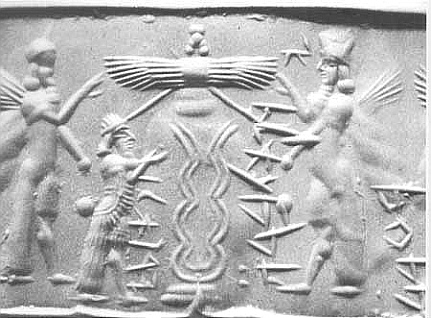Bees, familiars of the Goddess
since Catal Huyuk, appear frequently in classical mythology. They are called
the "Birds of the Muses" and are attracted to the heavenly fragrances of
flowers, from which they make the divine nectar, honey. Honey is antibacterial,
and its mildly laxative properties and sweet taste made it a primary ingredient
in ancient medicines. It was widely believed to be a source of divine
nourishment. In the myths of the ancient world, honey often nourished a divine
child raised in secret by a goddess in the depth of caves. "(greatfully quoted
from
When the Drummers were Women by Layne Redmond)
The
precise identity of the Bee Goddess remains a great mystery.
Nevertheless, she is a very strong spirit for these times of
great transition. Signs of her worship are evident in the
Mediterranean cultures of around 3,000 years ago at the temples of
Artemis. She is one of the oldest and most popular aspects
of the Divine Feminine. Born on the Greek Island of Delos,
Artemis was sister of Apollo and daughter to Zeus and Leto. When
she was a young girl, her father, Zeus, asked her what was her dream?
She answered that she wished to never have to marry a man and to always
be free to roam in the wild forest. Artemis was known as a patron
of young virgins, and a powerful protectress of the natural world of
fertility. As with other early Goddesses, ceremonies to invoke
Artemis were held in groves of trees, at places of special rock
outcroppings, at sacred sites along rivers or at quiet springs.
Ironically, Artemis's blessings were evenutally
cultivated at exquisite temple sites constructed throughout the
Mediterranean region.


